Yamaha GTS 1000
With Ian Falloon
The demise of the telescopic fork has been predicted for decades but despite its faults it still persists. Although the telescopic fork survives and endures, it has had to fend off several attempts at replacement by a hub-centred steering front end.
In the 1980s the huge French petroleum company ELF sponsored an Endurance and Grand Prix motorcycle racer with a front swingarm and hub-centre steering that was set to revolutionise motorcycle design.
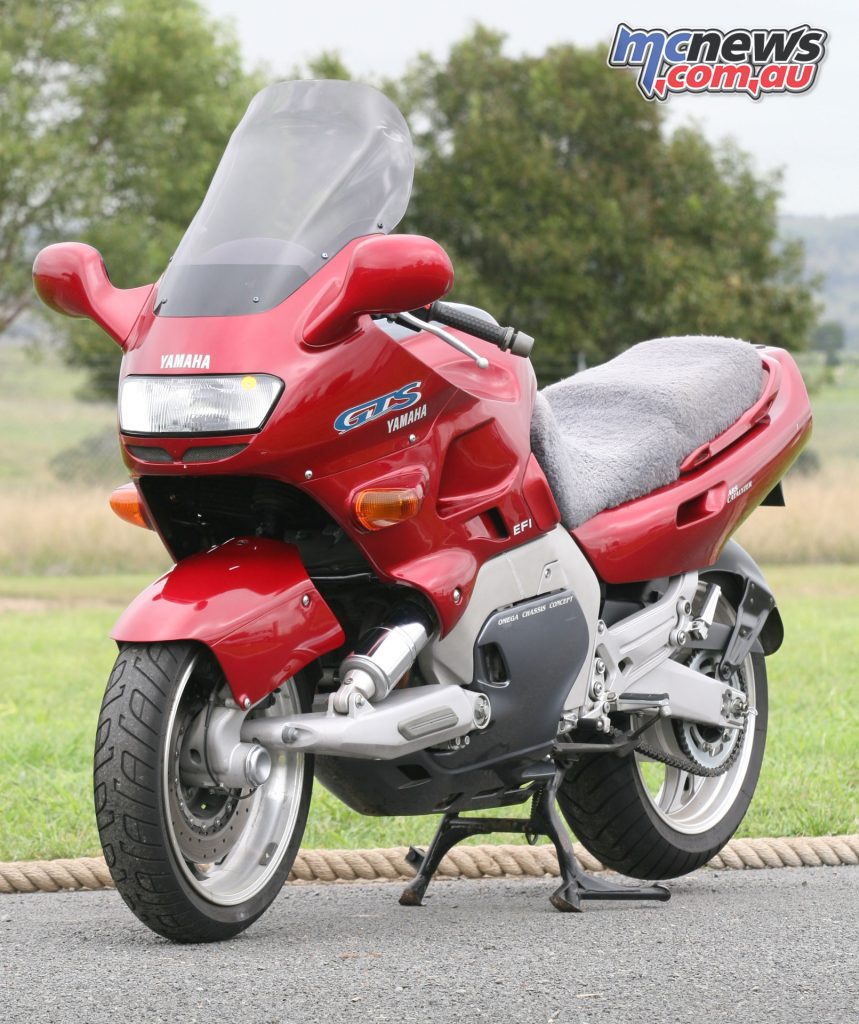
The culmination of a decade of development was a Honda-powered 500 that British rider Ron Haslam rode to a miserable 11th place in the 1988 500 World Championship. Despite the ELF failure Bimota was confident enough to release their Ducati-powered Tesi in 1990. While all this was going on James Parker in the US was quietly developing his RADD (Rationally Advanced Design Development) front end.

After unsuccessfully approaching Honda, Parker managed to sell his concept to Yamaha and between 1978 and 1991 work on the GTS progressed in the US and Japan. But it wasn’t only a radical front end that distinguished the GTS.
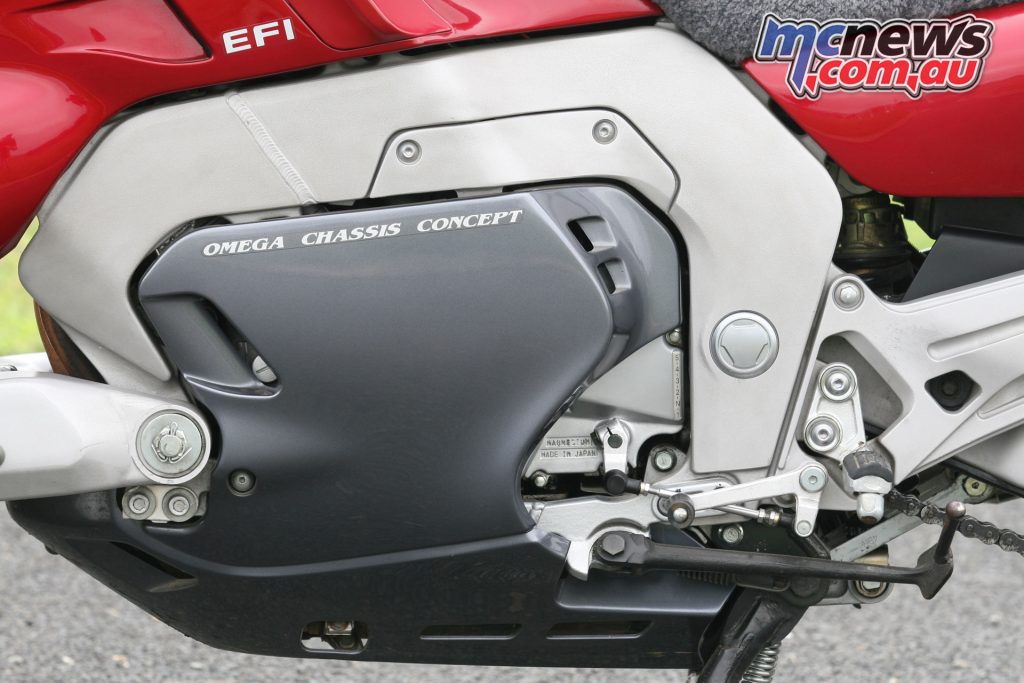
When it was released for the 1993 Model Year the GTS was intended to create a new market segment; Advanced Sport Touring. Although the chassis carried a landmark front end, the 1002 cc Genesis FZR1000-based engine also bristled with technical innovation.
The five-valve cylinder head design now boasted valve adjustment intervals of 40,000 km and the four cylinders were fed by Nippon Denso Electronic Fuel Injection. Power was limited to 100 horsepower and the GTS was one of the first motorcycles with an environmentally acceptable three-way catalytic converter.
But while there were plenty of other four-cylinder 100 horsepower motorcycles available none had a horseshoe-shaped Omega frame encircling the engine and supporting a conventional rear swingarm and single front arm.
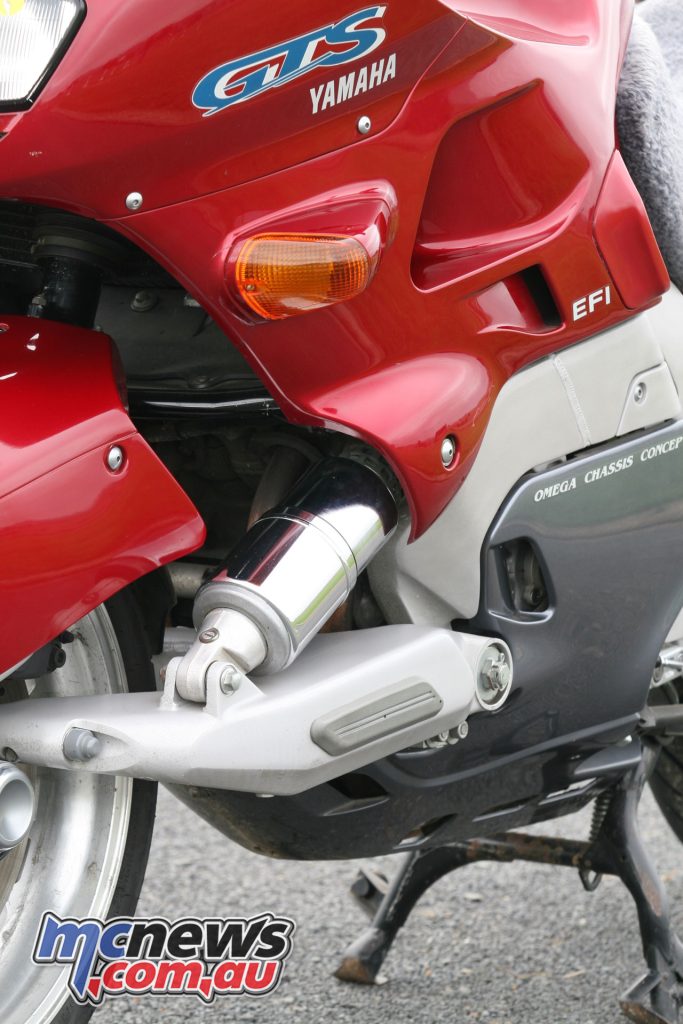
It made engineering sense to feed the stress-bearing loads of the front suspension lower into the rigid aluminium chassis and theoretically the GTS should have set the benchmark for stability and handling.
Certainly the braking was state-of-the-art for 1993, a massive vented 330 mm disc on the front gripped by an opposed six-piston caliper and 282 mm disc on the rear. ABS was standard, an ECU sampling wheel speed at eight-millisecond intervals. The detailing was also impressive, including a hydraulic clutch and expansive cockpit that included two trip meters.
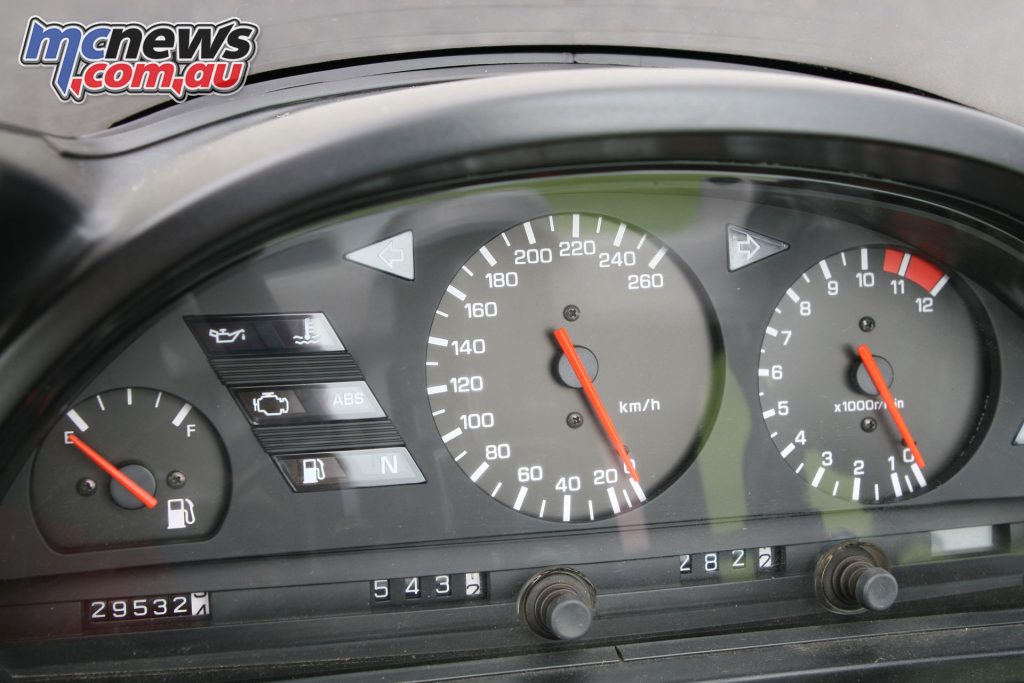
Where the GTS fell down was in its dimensions and price. The weight was a considerable 251 kg dry and the price a staggering $22,600 in 1993. As it wasn’t blessed with excessive power anyway the GTS was a leisurely performer, seemingly not providing much “bang for the buck”.
Although hailed as motorcycling’s future, the press predicting a bright future for hub-centre steering production motorcycles, the reality was far removed from the hype.
Conveniently forgetting the failure of ELF project and Bimota’s Tesi, like many new models that received lavish praise in the press the GTS was a disaster in the showroom. It was rumoured that only 33 were sold in Australia and many intended for here were diverted to Singapore.
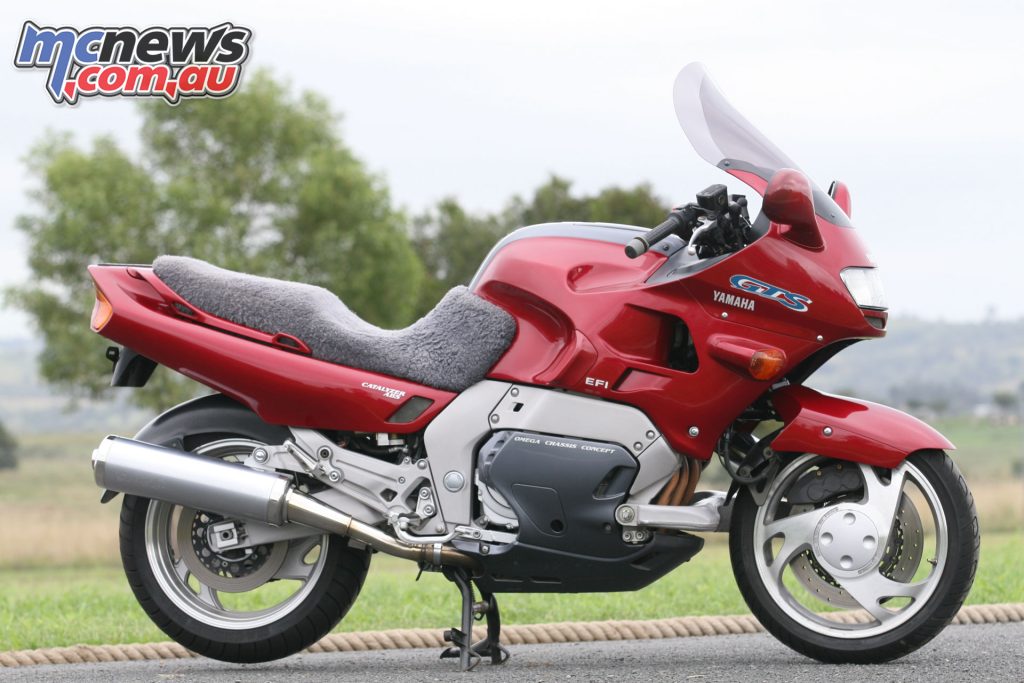
While the GTS is now better received, ultimately it was just too different and couldn’t succeed in a conservative world. It may have been the only motorcycle available with twin trip meters, but this wasn’t enough and by 1996 it was finished.
Five alternative motorcycle front ends
- Before the first hydraulically-damped telescopic fork appeared in 1935 on the BMW R 17, the girder fork predominated. Most girder forks lacked damping and the peak of its design was the “Girdraulic” fitted to Vincents after 1949.
- The leading link fork suspended the front wheel on links, with the pivot point behind the axle. The most common use was on the early ubiquitous Honda 50.
- Earnie Earles developed another type of leading link fork that caused the front to rise under braking, the opposite of the telescopic front fork. Although designed predominately for sidecar use, Earles forks were fitted to the BMW R-series from 1955-1969.
- BMW has always been prepared to experiment with alternative front ends, their most successful being the Telelever design fitted to many current boxer twins.
- Another BMW alternative was the Duolever designed by Norman Hossack. Also used by John Britten, this separated the suspension from steering forces.
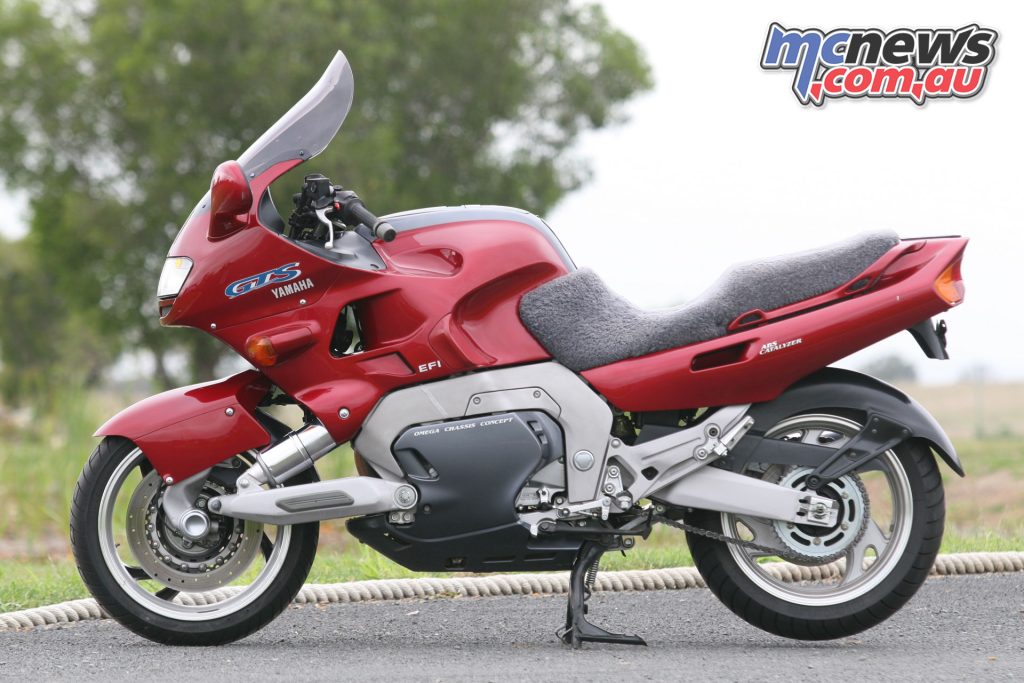
Yamaha GTS1000 Specifications
| Yamaha GTS1000 Specifications | |
| Engine | Liquid cooled, Four stroke, transverse four cylinder, DOHC, 5 valves per cylinder, 1002 cc |
| Bore x stroke | 75.5 X 56 mm |
| Compression Ratio | 10.8:1 |
| Induction | EFI |
| Power | 102 hp (74.4 kW) @ 9000 rpm |
| Torque | 106 Nm (78.1 ft-lb) @ 6500 rpm |
| Clutch | Wet, multiple discs, cable operated |
| Gearbox | Five-speed |
| Suspension (F) | Single sided swingarm variable preload, compression and rebound damping |
| Suspension (R) | Monocross variable preload, compression and rebound damping |
| Brakes | (F) Single 330mm disc 6 piston caliper with ABS, (R) Single 282mm disc 2 piston caliper |
| Wheels | Aluminium, 3.50 x 17 (F), 5.50 x 17 (R) |
| Tyres | 130/60-17 (F), 170/60-17 (R) |
| Rake & Trail | 24°/100 mm |
| L x W x H | 2170 / 700 / 1320 mm |
| Wheelbase | 1495 mm |
| Seat height | 790 mm |
| Weight | 278 kg (wet) |
| Fuel Capacity | 20 L |























